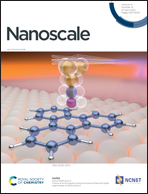A quasi-3D Sb2S3/reduced graphene oxide/MXene (Ti3C2Tx) hybrid for high-rate and durable sodium-ion batteries†
Abstract
Antimony sulfide (Sb2S3) is a promising anode material for sodium-ion batteries (SIBs) owing to its high theoretical capacity and superior reversibility. However, its cycling life and rate performance are seriously impeded by the inferior inherent electroconductibility and tremendous volume change in the charging/discharging processes. Herein, a quasi three-dimensional (3D) Sb2S3/RGO/MXene composite, with Sb2S3 nanoparticles (∼15 nm) uniformly distributed in the quasi-3D RGO/MXene architecture, was prepared by a toilless hydrothermal treatment. The RGO/MXene conductive substrate not only alleviates the volume expansion of Sb2S3, but also promotes electrolyte infiltration and affords highways for ion/electron transport. More importantly, the synergistic effects between RGO and Ti3C2Tx MXene are extremely favourable to maintain the integrity of the electrode during cycling. As a result, the Sb2S3/RGO/MXene composite exhibits a high reversible capacity of 633 mA h g−1 at 0.2 A g−1, outstanding rate capability (510.1 mA h g−1 at 4 A g−1) and good cycling performance with a capacity loss of 16% after 500 cycles.



 Please wait while we load your content...
Please wait while we load your content...